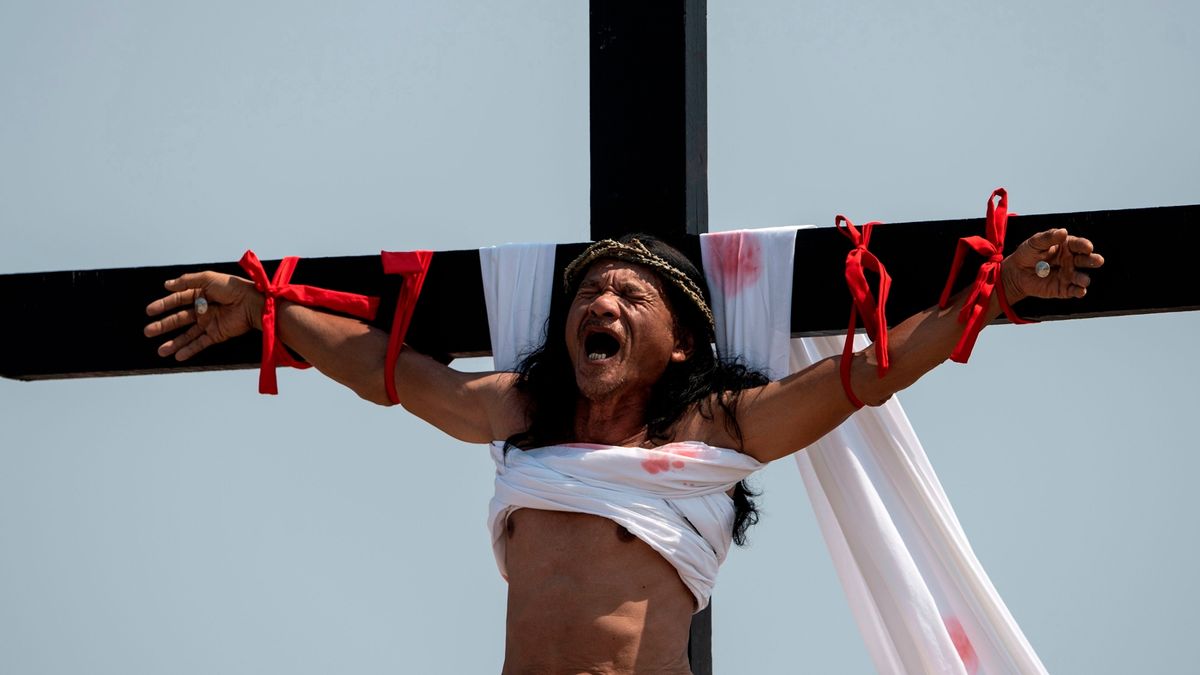Filipino Catholics Undergo Harsh, Bloody Penance
Filipino Catholics undergo harsh, bloody penance. Every year, in many parts of the Philippines, Filipino Catholics engage in a unique form of penance by performing painful and bloody rituals. These rituals are meant to symbolize their deep devotion and faith in Jesus Christ, and their desire for forgiveness and redemption.
Apr 10, 202318.3K Shares399.8K Views

Filipino Catholics undergo harsh, bloody penance. Every year, in many parts of the Philippines, Filipino Catholics engage in a unique form of penance by performing painful and bloody rituals. These rituals are meant to symbolize their deep devotion and faith in Jesus Christ, and their desire for forgiveness and redemption.
Understanding The Harsh And Bloody Penance Of Filipino Catholics
The most famous of these rituals is the "Pabasa," which is a continuous reading of the passion of Christ, from his trial to his crucifixion. It is usually done during the Holy Week, a time of reflection and penance for Catholics around the world.
The Pabasa is often performed by a group of men and women who take turns reading the verses of the passion, accompanied by traditional instruments such as the guitar, the drums, and the harmonica.
Another popular ritual is the "Senakulo," which is a reenactment of the passion of Christ. It is often performed by a group of actors who wear traditional costumes and makeup, and who use real or fake blood to depict the wounds and suffering of Jesus.
The Senakulo is usually done in the streets, with the actors moving from one location to another, to allow the public to witness and participate in the ritual.

Filipino Catholics Whip themselves in BRUTAL Easter Ritual
The most extreme form of penance is the "Penitensya," which involves self-flagellation, or the act of whipping oneself as a form of punishment and penance.
This practice is usually done by men, who believe that by experiencing physical pain and suffering, they can purify their souls and gain spiritual enlightenment. The Penitensya is often performed during the Good Friday, the day when Jesus was crucified.
During the Penitensya, the penitents usually wear a hood or a mask to conceal their identity, and they carry a wooden cross or a heavy log on their shoulders, to represent the burden of sin.
They also use a whip or a bamboo stick to inflict pain on themselves, particularly on their backs and shoulders, until they bleed. Some penitents also insert sharp objects, such as nails or thorns, into their flesh, as a way of imitating the wounds of Christ.
The Penitensya is controversial, as it is considered by many as a form of self-harm and a violation of human rights. Some critics argue that it promotes a culture of violence and masochism, and that it does not reflect the true essence of Christianity, which is based on love, compassion, and forgiveness.
Others, however, defend the practice as a legitimate expression of faith and devotion, and as a way of preserving the religious traditions of the Philippines.
Despite the controversy surrounding these rituals, they continue to be practiced by many Filipino Catholics, especially in rural areas where traditional customs and beliefs are still prevalent.
The rituals are seen as a way of connecting with the divine, of seeking salvation and redemption, and of expressing gratitude and humility towards God.
Final Words
The practice of painful and bloody rites in penance is a unique and controversial aspect of Filipino Catholicism. While some see it as a legitimate form of religious expression, others view it as a form of self-harm and violence.
Regardless of one's opinion, it is important to respect the beliefs and traditions of others, and to recognize that religion is a deeply personal and meaningful aspect of many people's lives.
Latest Articles
Popular Articles